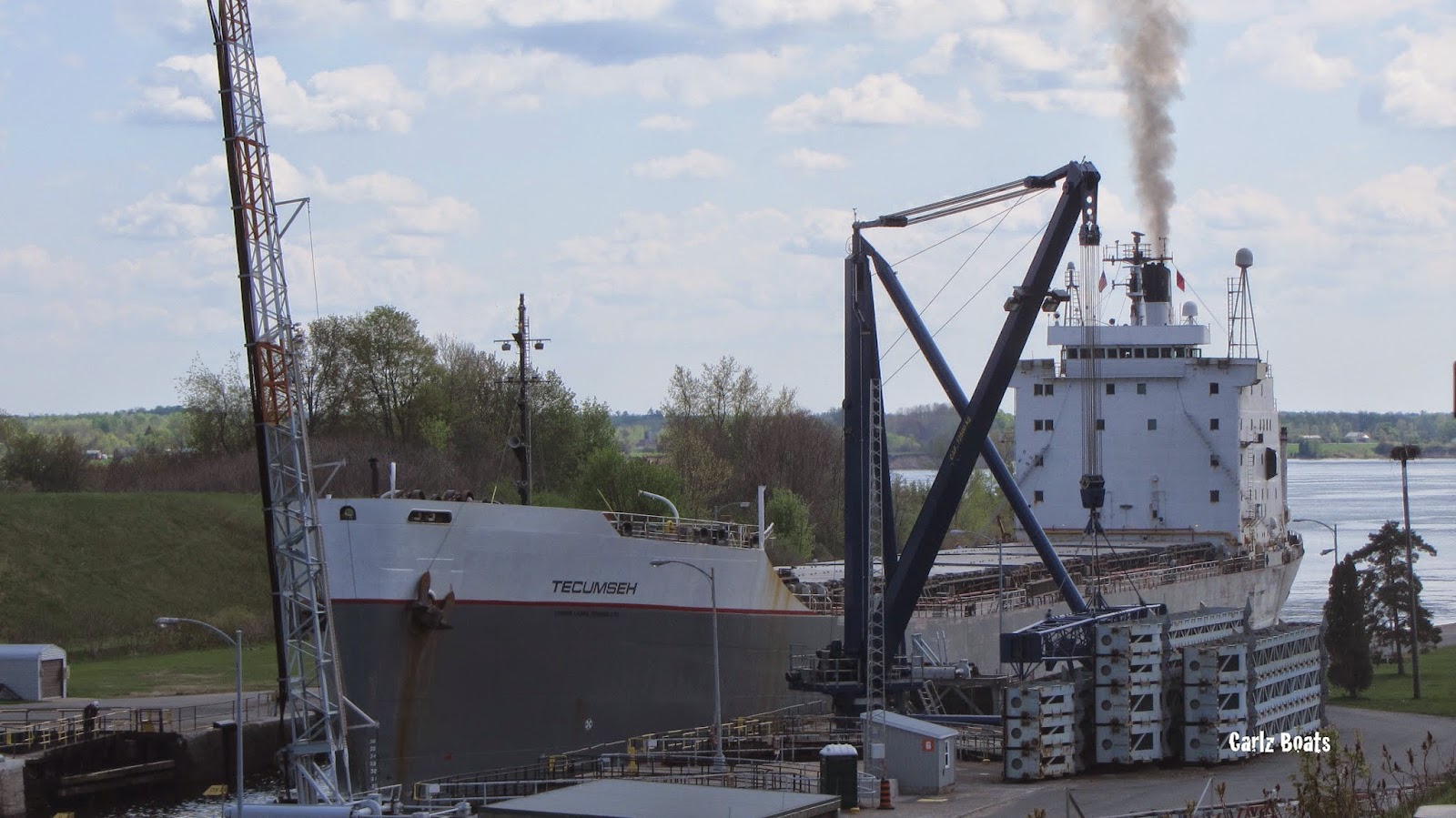You've got to love the name selection for Lower Lakes Towing's fleet where all ships, with the exception of one, is named after First Nations leaders, their peoples or their unique translations. Like the classic straight-deck bulk carrier MANITOBA which like the Canadian province is named after what the Ojibwa people called 'Manidoobaa' meaning "Straits of Manitou, the Great Spirit" referring to the narrow channel at the centre of Lake Manitoba. The name of Lower Lakes bulk carrier KAMINISTIQUA (http://carlzboats.blogspot.ca/2012/07/salty-laker-kaministigua.html) is Ojibwa for 'river with islands', or their self unloader SAGINAW means "where the 'Sauk' peoples lived" in Eastern Michigan (http://carlzboats.blogspot.ca/2012/09/self-unloader-saginaw.html). Other Aboriginal named Lower Lakes ships include CUYAHOGA, MISSISSAUGI, MANISTEE, MANITOWOC and MICHIPICOTEN.
However, the ship name that I like the best is on their 641' bulk carrier TECUMSEH. Tecumseh was leader of the Shawnees and though he was born in Ohio, he became an ally of the British during the War of 1812. Tecumseh is honoured in Canada as a hero and military commander who played a major role in Canada's successful repulsion of an American invasion in the War of 1812. Chief Tecumseh was killed in the Battle of Thames near current Chatham, Ontario on October 5, 1813.
When the ship TECUMSEH was built at the Lockheed Shipbuilding yards in Seattle, Washington in 1973, her name was SUGAR ISLANDER and she was the largest American bulk carrier ever built to date. Her name was ideal because the SUGAR ISLANDER's primary task was to transport raw sugar from Hawaii to California. Later her name was changed to ISLANDER, JUDY LITRICO and then TINA LITRICO when she was purchased by Lower Lakes Towing Ltd. of Port Dover, Ontario in 2011. The gross tonnage for the TECUMSEH is 18,049 tons and she can carry a variety of dry bulk cargoes including grain, salt and iron ore. Her homeport is Nanticoke which in Delaware means "winding" creek, which incidentally is what makes Lower Lakes ships unique as they are smaller and able to maneuver shallower lake ports and winding rivers like the Cuyahoga, which in Iroquois means "crooked' river. There's a meaning for everything, eh!! c);-b
However, the ship name that I like the best is on their 641' bulk carrier TECUMSEH. Tecumseh was leader of the Shawnees and though he was born in Ohio, he became an ally of the British during the War of 1812. Tecumseh is honoured in Canada as a hero and military commander who played a major role in Canada's successful repulsion of an American invasion in the War of 1812. Chief Tecumseh was killed in the Battle of Thames near current Chatham, Ontario on October 5, 1813.
When the ship TECUMSEH was built at the Lockheed Shipbuilding yards in Seattle, Washington in 1973, her name was SUGAR ISLANDER and she was the largest American bulk carrier ever built to date. Her name was ideal because the SUGAR ISLANDER's primary task was to transport raw sugar from Hawaii to California. Later her name was changed to ISLANDER, JUDY LITRICO and then TINA LITRICO when she was purchased by Lower Lakes Towing Ltd. of Port Dover, Ontario in 2011. The gross tonnage for the TECUMSEH is 18,049 tons and she can carry a variety of dry bulk cargoes including grain, salt and iron ore. Her homeport is Nanticoke which in Delaware means "winding" creek, which incidentally is what makes Lower Lakes ships unique as they are smaller and able to maneuver shallower lake ports and winding rivers like the Cuyahoga, which in Iroquois means "crooked' river. There's a meaning for everything, eh!! c);-b















